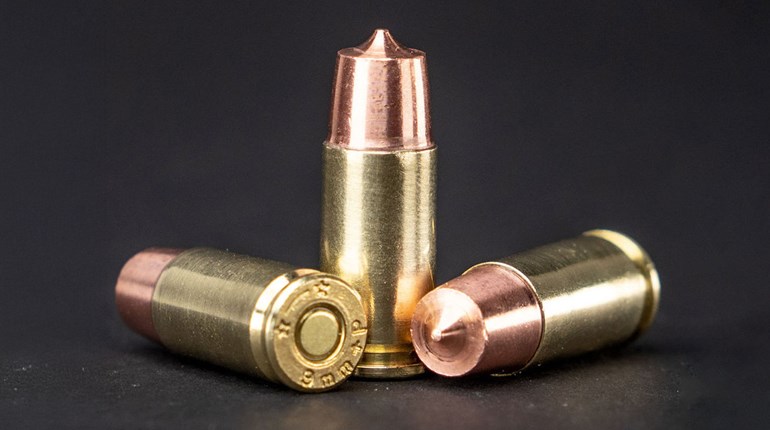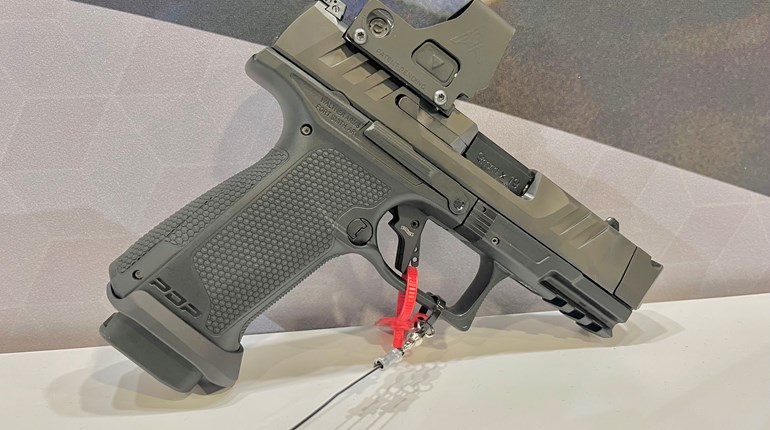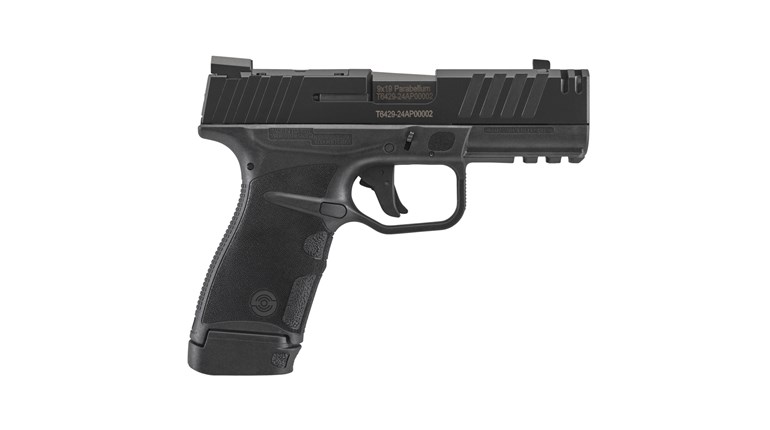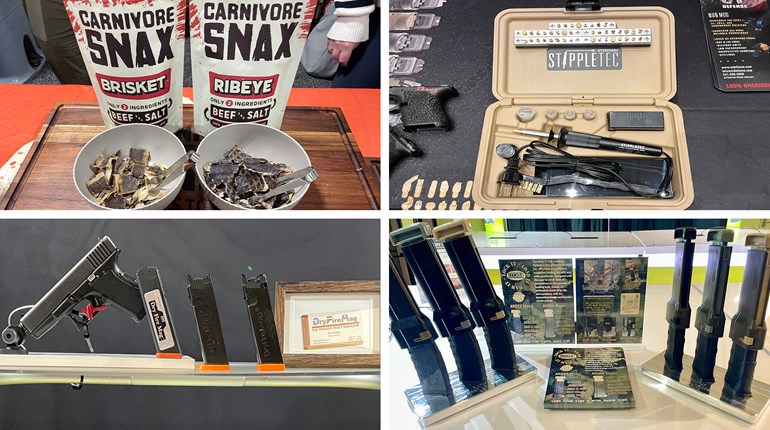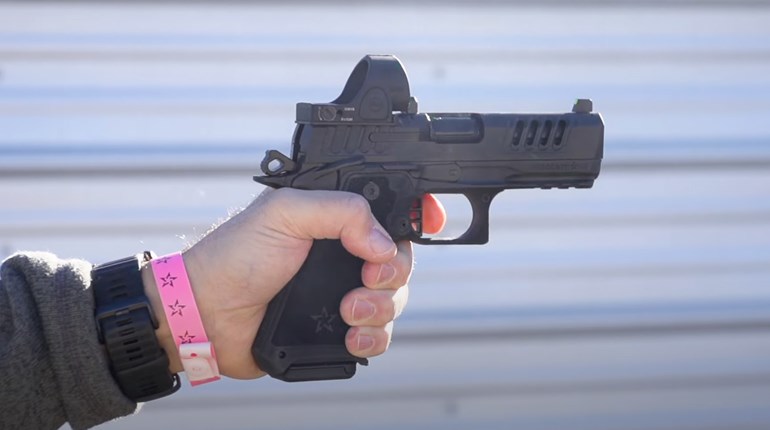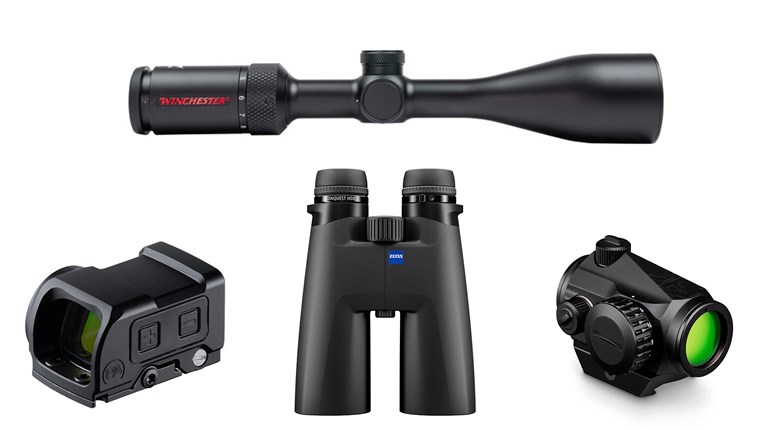
It could be argued that, for the first couple of decades of its life, the Colt M1911 had no competition. In terms of reliability, ruggedness and reputation, John M. Browning's slab-sided warhorse had no equal. That is until 1935, when Fabrique Nationale (FN) introduced the P35, or the Browning Hi Power as it is more popularly known.
The Hi Power, or HP, nomenclature was not derived from its chambering—the 9x19 Parabellum was hardly a qualifier in that respect—but for its magazine capacity of 13 rounds compared to the 1911's seven-round stack. It was only natural for the Hi Power to be compared to the 1911, for the same man designed both pistols.
Unfortunately, the Hi Power was one of the last designs on which Browning worked. On Nov. 26, 1929, the firearms genius died of a heart attack while at his desk. Browning's death came just two years after he was granted two separate patents for a semi-automatic pistol commissioned by the French government. One was for a locked-breech system, while the other was a blowback design similar to the 1911. Although the locked-breech design was ultimately selected, the Hi Power has often been referred to as an improved 1911. This was not the case. Having sold all rights for the 1911 to Colt, Browning was forced to, in essence, compete against himself by designing around his original patents. Of course, this situation became even more complicated after his death.

Luckily for the future of the GP-35, or the Grande Puissance as the gun was initially called, Fabrique Nationale had another talented gun designer, Dieudonné Joseph Saive, who became FN's head of firearm development after Browning died. Saive perfected the HP's double-stack magazine, giving the gun its 13+1 capacity without dramatically thickening the grips. He also tweaked Browning's original grip contour, making it more comfortable.
In 1928 the patents on the 1911 expired, giving Saive an advantage Browning did not have: he could now incorporate some 1911 elements into the Hi Power, including a simplified takedown system and a removable barrel bushing. Years later, Saive would also create an aluminum-alloy frame for the Hi Power, as well as a short-lived double-action version in 1952.
The Browning Hi Power was well received when it was introduced in 1935. With its 45⁄8-inch barrel, it was balanced and ergonomic, functioned flawlessly with military ball ammunition, was accurate enough to print 2 1⁄2-inch groups at 25 yards and, being slightly smaller than the 1911, weighed only 2 pounds. But, it was less than perfect.
For one thing, the sights were small and difficult to align. The safety on the left side of the frame was miniscule and lacked the defining click of the 1911. The trigger pull was extremely heavy. It also had a nasty habit of biting the hand that held it—yet another trait the Hi Power inherited from the M1911. Unless the pistol was held just right, the hammer spur could pinch the web of the hand between the thumb and the index finger with each shot. Some objected to the lack of a grip safety, although like the 1911, the hammer did have a half-cock. Then there was the magazine disconnect—even more disconcerting to many, for it prevented the gun from firing unless the magazine was fully inserted (a feature the French government required).
Nonetheless, these were finely crafted, superbly finished pistols, exhibiting the best of Belgian manufacturing. Plus, with the Hi Power's increased capacity, it quickly gained a reputation in the field, even though it was soon discovered the 13-round magaziness were less prone to malfunction when only 12 rounds were loaded. Two versions were initially offered: a fixed-sight Ordinary Model and an Adjustable Rear Sight Model, containing a slot in the backstrap for a detachable shoulder stock.
Ironically, France did not adopt the Hi Power. Belgium did, however, and the gun ended up being used by both Allied and Axis powers during World War II. Germany took over Hi Power manufacturing when it invaded Belgium in 1940, and the guns suffered from a noticeable lack of refinement as the war progressed.
Before the Germans occupied the FN factory, Hi Power drawings were sent to Canada and England, enabling Allied production to be relocated. After VE Day, production in the FN factory regained its pre-war luster and the pistol was eventually adopted by more than 50 armies throughout the world. In addition, since 1971 some Hi Powers have been assembled in Portugal from Belgian-made parts.
The Hi Power began arriving in the U.S. in 1954 and has enjoyed an admirable reputation as both a self-defense and competitive-shooting pistol, as well as a collectable firearm. At one time, it was chambered in .30 Luger, and a .40 S&W variant was introduced in 1994. However, beginning in 2011, only the 9 mm is being imported.
Today, the FN-made Hi Power is actually a better gun than Browning or Saive conceived. The hammer, safety and trigger pull have been improved. In addition, a number of limited-edition versions—including the highly desirable, engraved Louis XVI Model (imported from 1980 to 1984) and the new 75th Anniversary Model, with gold-accented and engraved silver-nitride finish—make the Hi Power the ultimate testimony to Browning's final vision of what a single-action, semi-automatic pistol should be.












